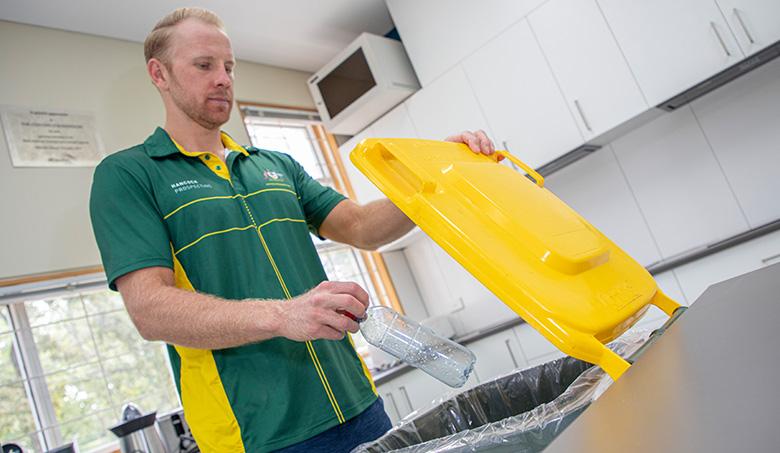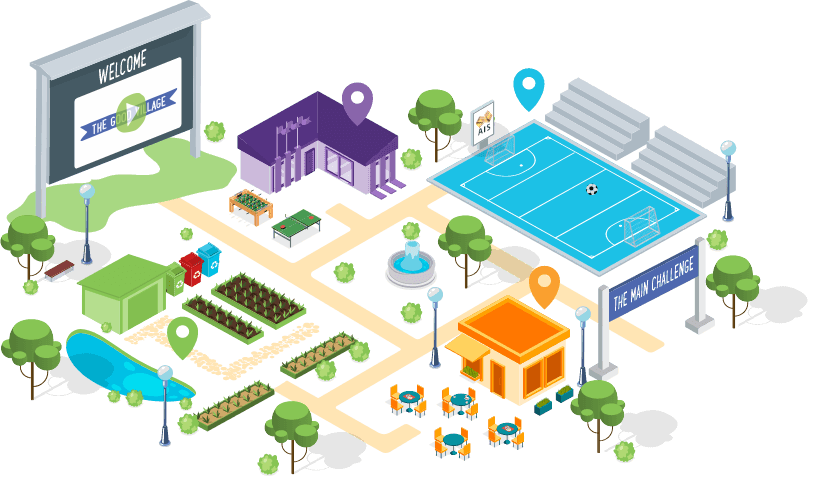Activity 4
Reduce, Reuse, Recycle: Recycling Activity
Sustainability Education
Engage your students in a comprehensive exploration of recycling and sustainability with this design and technology lesson plan. This lesson helps to engage students in a deeper understanding of the recycling process and its significance in addressing environmental challenges. Students will explore the lifecycle of recycled materials, from collection to the creation of new products, emphasising the importance of reducing waste and conserving resources.
Through hands-on activities, students will investigate different types of recyclable materials, examine recycling information labels, and research the recycling process. They will also engage in creative design projects, developing innovative products using recycled materials while considering sustainability and environmental impact.
This interactive upper primary lesson plan not only enhances students' knowledge of recycling and sustainable practices, but also encourages critical thinking and creativity. By the end of the lesson, students will be equipped with the skills to analyse and design sustainable products, promoting an eco-friendlier approach in their daily lives.
Recycling Education: Learning Objectives
Level 1
Understand and describe the recycling process, making suggestions for how recycled materials can be used.
Level 2
Analyse resources made from recycled materials and explain how they have been created to respond to environmental challenges.
Australian Curriculum Links
Science as a human endeavour
- Examine why advances in science are often the result of collaboration or build on the work of others (AC9S6H01)
Processing and production skills
- Investigate needs or opportunities for designing, and the materials, components, tools, equipment and processes needed to create designed solutions (AC9TDE6P01)
- Negotiate design criteria including sustainability to evaluate design ideas, processes and solutions (AC9TDE6P04)
Teacher Material Needed
- Various food packaging items collected by students
- Drawing materials for designing new product
- Recycling information labels from packaging
- Presentation materials for communicating product design
- Research materials (books, internet access)
Understanding the Concept of Recycling
- Introduce the concept of recycling to students, explaining its importance for reducing waste and conserving resources. Discuss how recycling helps protect the environment by minimising landfill waste and reducing the need for new raw materials. Highlight the importance of recycling activities and how every small action contributes to a larger impact.
- Discuss the different types of materials used in food packaging and their recyclability, focusing on symbols and labels that indicate recycling information on recyclable food packaging.
- Explain the upcoming recycling activities focused on investigating the recycling process, researching recycled materials, and designing a sustainable product.
Classroom Activity 1: Exploring Recyclable Food Packaging
- Instruct students to collect different types of food packaging for a week and sort them into categories based on the materials they are made from. Once collected, guide students in sorting these items into categories based on their material types, helping them to understand the diversity of recyclable materials.
- Encourage students to examine the recycling information labels on the packaging to understand how each material can be reused or recycled.
- Guide students in conducting research to learn more about the recycling process and how recycled materials are sorted and processed.
Classroom Activity 2: Working with Recycled Materials
- Assign students to research how recycled materials are used to make new products, focusing on examples from different industries such as packaging, construction, and textiles.
- Encourage students to identify items they use in their daily lives that are made from recycled materials, such as paper products, clothing, or furniture. Have them discuss how these products contribute to sustainability and how they can make more eco-friendly choices in their own lives.
- Facilitate discussions about the environmental benefits of using recycled materials and the importance of sustainable production practices.
- Instruct students to design a new product that could be made from recycled materials, considering sustainability and environmental impact.
- Prompt students to think about the materials they will use, how the product will be manufactured, and how they will communicate its recycled content to consumers.
- Encourage students to create sketches or digital designs of their products, accompanied by explanations of their design choices and sustainability strategies.
Recycling Lesson Wrap Up
- Allow students to present their product designs to the class, explaining their ideas and sustainability considerations. This presentation should highlight how their products utilise recycled materials, the design process, and the potential environmental benefits.
- Facilitate a discussion about the importance of recycling and sustainable product design in reducing waste and conserving resources. Discuss the broader impact of integrating recycled materials into product design and everyday life.
- Encourage students to continue exploring ways to incorporate recycled materials into their daily lives and future projects. Students will have a comprehensive understanding of the value of recycling and sustainable design after this lesson.
Reduce, Reuse, Recycle: Recycling Activity
Reduce, Reuse, Recycle: Recycling Activity


